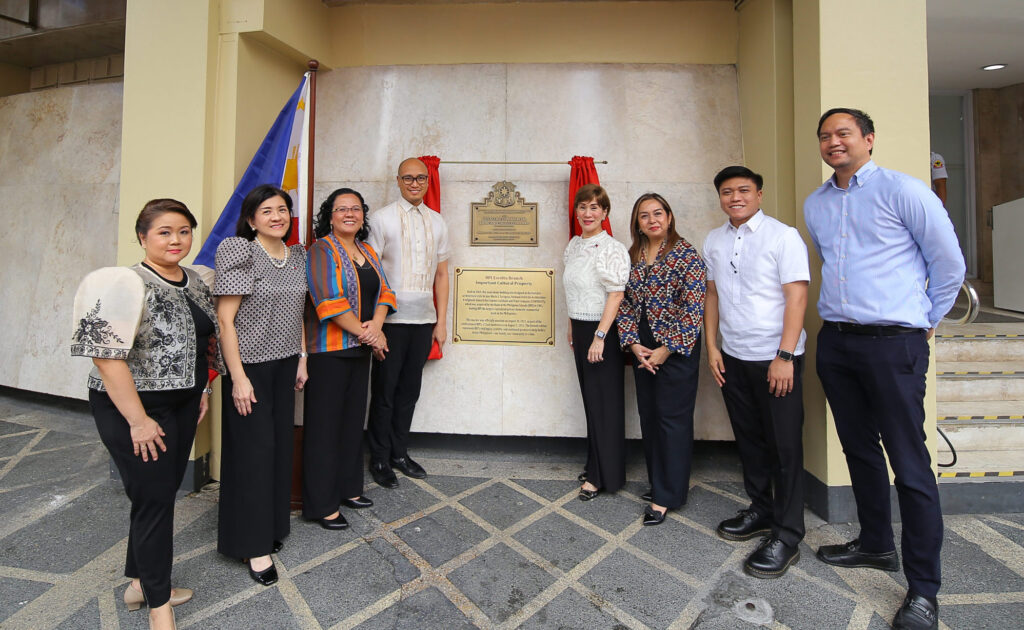The National Museum of the Philippines and the National Commission for Culture and the Arts recently installed an Important Cultural Property marker at the Bank of the Philippine Islands Escolta branch to ensure the protection and preservation of the 54-year-old post-war edifice and formally establish its cultural and historical significance to the country.
The National Cultural Heritage Act of 2009 defines ICPs as having “exceptional cultural, artistic and historical significance” to the Philippines.
“As we celebrate 172 years of BPI, the inauguration of BPI Escolta branch as an Important Cultural Property reminds us of the cultural heritage and rich tradition that we share with the Filipino people,” said BPI Consumer Banking head Ginbee Go. “We are deeply committed to nation-building and supporting economic progress as the first bank in Southeast Asia. While we honor our history by preserving important architectural branch structures, we are cognizant of the need to remain relevant and better serve our customers. Our digital transformation journey is our response to the changing landscape of banking in pursuit of our vision to build a better Philippines — one family, one community at a time.”

The National Museum of the Philippines and the National Commission for Culture and the Arts conferred an Important Cultural Property Marker on the BPI Escolta branch. The historic milestone represents the bank’s legacy, stability and continued promise to help build a better Philippines.
Located at Escolta corner Yuchengco Streets in Manila, the half-dome, futuristic building was built in 1969 and designed with a brutalist architectural style by the late National Artist for Architecture Jose Maria V. Zaragoza. It previously housed the Commercial Bank and Trust Company, a commercial bank that began operating in 1954.
The BPI Escolta branch building is the latest addition to the list of BPI branches in historical landmarks. Also bearing historical markers are BPI Escolta Sta. Cruz, which was built in 1894, and BPI Cebu Main branch, which was built in 1924.
The unveiling of the ICP marker is part of the line-up of activities in August to celebrate BPI’s 172nd anniversary, which signifies its rich legacy, financial strength and stability, and vision for a better Philippines.
After acquiring COMTRUST in 1981, BPI became the largest-capitalized private domestic commercial bank in the Philippines. The merger was referred to in newspapers as the biggest in local banking history, increasing BPI’s total assets to a total value of at least P7.5 billion. The merger was also deemed as “the most important aspect of the acquisition” as it expanded BPI’s network and utilized COMTRUST branches’ strategic locations and strength in retail banking.
